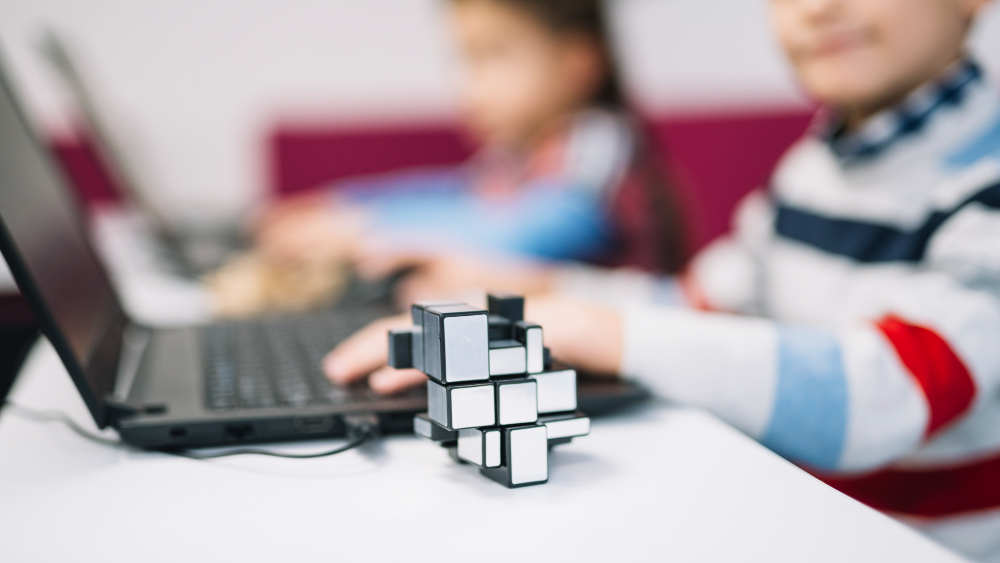The Rubik’s Cube 3×3 is more than just a colorful puzzle; it’s a gateway to learning essential life skills and stimulating intellectual growth. Teaching kids to solve a Rubik’s Cube provides them with far more than bragging rights—it sharpens their cognitive abilities, builds resilience, and encourages creativity. Whether they’re budding problem solvers or looking for a new hobby, mastering the cube is a fun and rewarding challenge. Here are 10 compelling reasons why every child should learn to solve a Rubik’s Cube.
1. Enhances Problem-Solving Skills
Solving the Rubik’s Cube is a puzzle-solving exercise that requires breaking down a complex problem into smaller, manageable steps. Kids learn to analyze patterns, devise strategies, and implement solutions systematically. These skills extend beyond the cube and prepare them to tackle real-world problems in a structured way.
2. Develops Patience and Perseverance
The journey to solving the Rubik’s Cube can be frustrating at first, but it teaches kids the importance of patience and perseverance. Every failed attempt becomes a learning experience, encouraging them to try again until they succeed. This resilience helps them face challenges with a positive mindset.
3. Boosts Memory
Learning the algorithms needed to solve the Rubik’s Cube 3×3 improves memory retention. Kids memorize sequences and patterns, training their brains to recall information quickly and accurately. This enhancement in memory skills can be beneficial for academics and everyday life.
4. Improves Hand-Eye Coordination
The physical manipulation of the cube develops fine motor skills and hand-eye coordination. Kids must execute precise turns and align pieces correctly while keeping track of their progress visually. This skill is particularly valuable for activities like sports, music, and writing.
5. Encourages Focus and Concentration
Solving a Rubik’s Cube requires sustained attention and mental engagement. Kids learn to focus on the task at hand, ignoring distractions and maintaining their concentration. This ability to stay focused is crucial for academic success and effective problem-solving.
6. Sparks Creativity
While the Rubik’s Cube may seem formulaic, solving it often involves thinking outside the box. Kids explore different methods, try new approaches, and discover creative ways to solve problems. The cube encourages experimentation, fostering their imagination and innovative thinking.
7. Teaches Goal Setting
Solving the Rubik’s Cube involves setting and achieving goals, whether it’s solving one face, completing the first two layers, or mastering advanced techniques. Kids learn to break down larger tasks into smaller milestones, celebrating each success along the way.
8. Builds Confidence
Successfully solving a Rubik’s Cube, especially for the first time, provides kids with a sense of accomplishment. This boost in confidence motivates them to tackle other challenges with enthusiasm. The pride of showing off their skills to friends and family reinforces their self-esteem.
9. Introduces Algorithmic Thinking
The Rubik’s Cube introduces kids to the concept of algorithms—a step-by-step sequence of actions to achieve a desired result. This foundational understanding is particularly relevant in today’s digital age, where coding and programming are becoming essential skills.
10. Provides Fun and Entertainment
Above all, the Rubik’s Cube is a source of endless fun and entertainment. Whether solving it solo, racing against friends, or exploring new tricks, kids stay engaged while developing valuable skills. It’s a screen-free activity that blends learning with play.
How to Get Started with the Rubik’s Cube 3×3
To encourage kids to learn the Rubik’s Cube, follow these steps. Choose the right cube and invest in a good-quality one that turns smoothly, making it easier for kids to manipulate. Learn the basics by starting with beginner-friendly methods, such as the layer-by-layer technique or the beginner CFOP method. Use tutorials like online videos, apps, or books that provide step-by-step guidance for solving the cube. Practice regularly to build familiarity with algorithms and movements. Celebrate progress by acknowledging milestones, such as solving the first face or learning a new algorithm, to keep kids motivated.
Tips for Teaching Kids to Solve the Rubik’s Cube
Start simple by focusing on solving one face or one layer at a time before introducing advanced methods. Be patient and allow kids to make mistakes and learn at their own pace. Make it fun by turning solving the cube into a game or friendly competition. Involve friends by encouraging group solving sessions to build camaraderie and make learning enjoyable.
Life Skills Gained from Solving the Rubik’s Cube
Beyond the technical skills, the Rubik’s Cube teaches kids life lessons that extend into adulthood. These include adaptability by learning to change strategies when initial plans don’t work, time management by solving under a timer to encourage efficiency and planning, and stress management by staying calm under pressure, especially during competitions or timed challenges.
Conclusion
The Rubik’s Cube 3×3 is much more than a toy; it’s a tool for intellectual and personal growth. By learning to solve the cube, kids gain essential skills like problem-solving, patience, memory enhancement, and creativity. It’s an activity that combines fun, challenge, and education, making it an ideal addition to any child’s routine. Equip your child with a Rubik’s Cube today and watch them unlock their full potential—one twist at a time.
